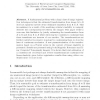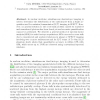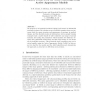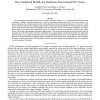106
Voted
IPMI
1999
Springer
16 years 1 months ago
1999
Springer
Abstract. Inter-subjectnon-rigid registration of cortical anatomical structures as seen in MR is a challenging problem. The variability of the sulcal and gyral patterns across pati...
IPMI
1999
Springer
16 years 1 months ago
1999
Springer
Abstract. A fundamental problem with a large class of image registration techniques is that the estimated transformation from image A to B does not equal the inverse of the estimat...
115
Voted
IPMI
1999
Springer
16 years 1 months ago
1999
Springer
The problem of reconstructing a binary image (usually an image in the plane and not necessarily on a Cartesian grid) from a few projections translates into the problem of solving a...
IPMI
1999
Springer
16 years 1 months ago
1999
Springer
In nuclear medicine, simultaneous dual-isotope imaging is used to determine the distribution of two radiotracers from a single acquisition and for emission/transmission (E/T) imagi...
118
Voted
IPMI
1999
Springer
16 years 1 months ago
1999
Springer
The goal of this work is to develop an approach to shape representation and classification that will allow us to detect and quantify differences in shape of anatomical structures d...
104
Voted
IPMI
1999
Springer
16 years 1 months ago
1999
Springer
1 We propose to use statistical models of shape and texture as deformable anatomical atlases. By training on sets of labelled examples these can represent both the mean structure a...
95
Voted
IPMI
1999
Springer
16 years 1 months ago
1999
Springer
An algorithm for improved automatic segmentation of gross anatomical structures of the human brain is presented that merges the output of a tissue classification process with gross...
102
Voted
IPMI
1999
Springer
16 years 1 months ago
1999
Springer
We investigated 7 di erent similarity measures for rigid body registration of serial MR brain scans. To assess their accuracy we used a set of 33 clinical 3D serial MR images, manu...
92
Voted
IPMI
1997
Springer
16 years 1 months ago
1997
Springer
75
Voted
IPMI
1997
Springer
16 years 1 months ago
1997
Springer




